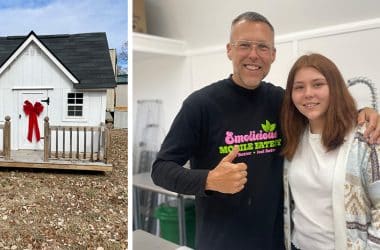
As the world becomes increasingly aware of wasteful practices, the building industry is under pressure to provide sustainable offerings that minimize its environmental footprint.
According to the World Green Building Council, the building industry accounts for 39 percent of global greenhouse gas emissions. Sustainability is no longer a consideration for some customers, but a requirement.
WHY IS EVERYONE TALKING ABOUT SUSTAINABILITY?
Climate risks have only become more frequent and more expensive, and some scientists indicate the increased occurrences correspond with carbon-generating activities.
With more than $1 billion in disasters happening every year—18 in 2022 alone—future shed owners are more aware of the potential risks when owning and maintaining a building.
Homeowners want the assurance that they and their property are going to be protected.
Millennials, or people ages 27 to 42, are aging into prime property ownership years. And they are far more likely to let sustainability influence the way they spend and invest. This applies to their homebuying decisions, too.
According to Nielsen, 75 percent of millennials are eco-conscious to the point of changing their buying habits to favor environmentally friendly products.
As they become a dominant demographic in the property ownership arena, it is important to consider their value sets and what they are looking for when they invest—including a shed.
HOW TO CHOOSE SUSTAINABLE PRODUCTS
If you are looking to reduce the ecological footprint of your next build, the first step is to research your current product line. Some companies prioritize green practices.
Not only is nothing wasted in the production process, but life cycle analysis (LCA) can point out products that are carbon negative.
This means that they store more carbon than the total greenhouse gas emissions released throughout their life cycle, offsetting and even erasing their impact on the planet.
Some products have received a Environmental Product Declaration (EPD), which proclaims that they store 10 times more carbon than fiber cement–based products and emit 54 percent less greenhouse gas.
“EPDs are a helpful indicator when researching sustainable building products,” says Donna Kopecky, LP Building Solutions director of sustainability and public policy.
Responsible companies source their wood through the responsible management of forestlands, which are third-party verified through the Sustainable Forestry Initiative (SFI).
THE FUTURE OF SUSTAINABLE BUILDING PRODUCTS
Decarbonization is becoming a key industry term, so it’s essential to have the knowledge and skill set to provide your clients with information about options that are mindful of the planet.
Ultimately, this information can provide peace of mind about the products that will make up their outdoor shed with an understanding of how it helps combat a rise in global greenhouse gas emissions.
However, sustainability also means choosing products that are durable and longer lasting, generating less waste over time. Quality products are designed to help stand the test of time.
On top of their green production process, using products like these can help assure clients that your sheds will pave the way for a lower carbon economy.




